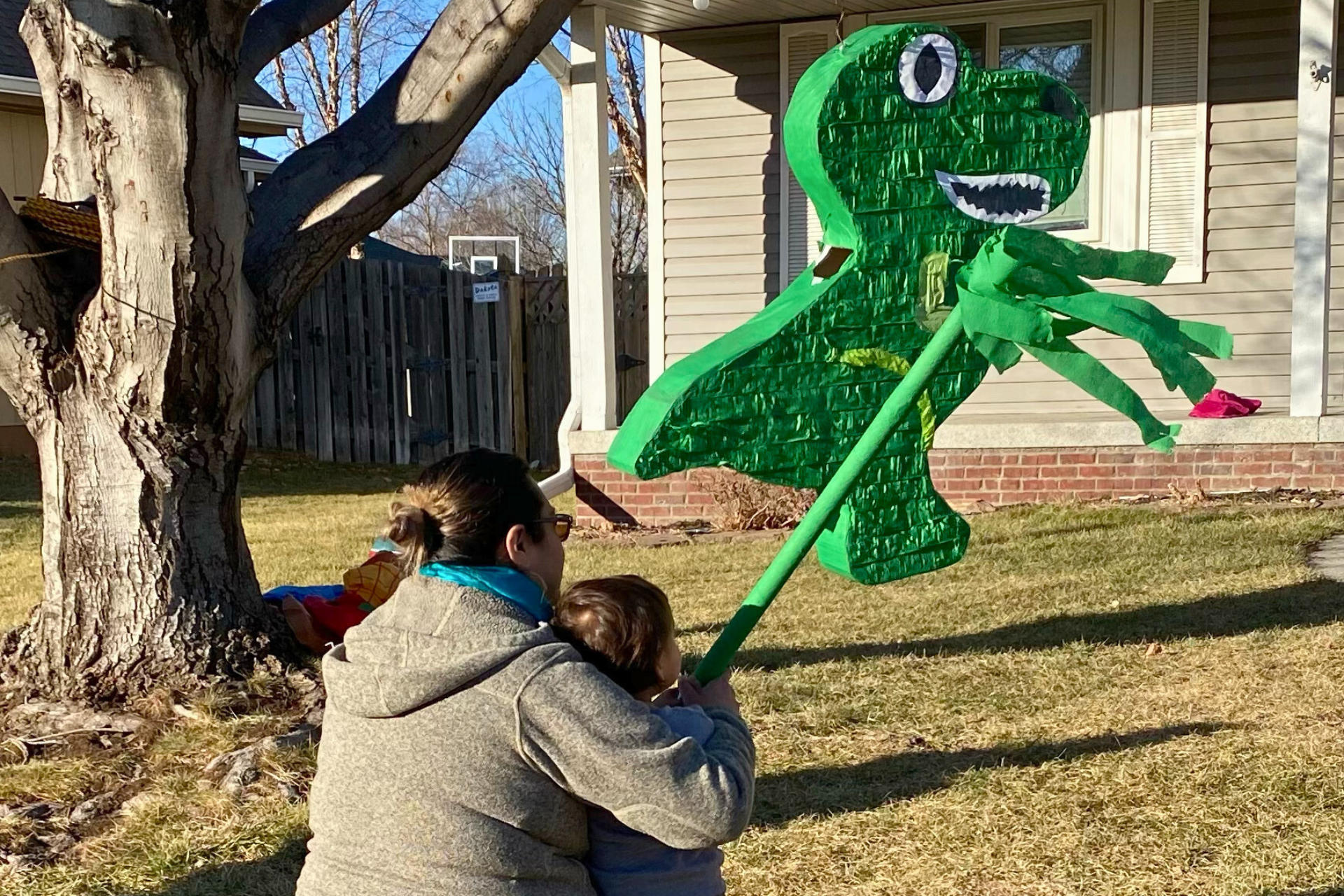Miriam Peralta De García celebrates her Mexican heritage and the tradition of piñatas and finds parallels to our walk of Christian faith.
MIRIAM PERALTA DE GARCÍA
Semilla, Latinx Church Plant, Greater Southwest District
“Dale, dale, dale, no pierdas el tino, porque si lo pierdes, pierdes el camino . . .”
I love to sing this familiar piñata chant at a birthday party, a baptism, a celebration with friends, or the traditional Las Posadas festival during Christmas. It is a chant that comes naturally while waiting impatiently after eating cake because I know there will be a piñata with surprises inside.
It’s a chant that unites everyone gathered at that celebration, whether they are young or old or have experienced a piñata breaking or not. Why? Because the tradition includes everyone! Even for those who do not speak Spanish, you still get invited to sing and swing at the piñata.

In Mexico, piñatas are used in almost every celebration when people gather for a special occasion. This tradition began in 1856 when the Augustinian friars of Acolman de Nezahualcóyotl, in the present state of Mexico, near the archaeological site of Teotihuacán, received permission from Pope Sixtus V to celebrate the “masas de aguinaldo” (Christmas Masses), which would later become Las Posadas. At these masses that took place in the days leading up to Christmas, the friars introduced the famous piñata.
As I have grown older, I have become interested in learning why we do the things we do, especially in our culture. And I want to continue sharing this tradition with others while having a deeper understanding of where it all originated. Knowing the piñata’s rich history helps!
Piñatas have been part of many celebrations that I have attended or participated in, from my birthday parties, where there would be more than one piñata to swing at with my family and neighbors, to leading the familiar chant at the birthday parties of my brother’s children. There was even one to help celebrate my graduation from seminary!
It is that special time when we gather with our friends, family, and neighbors of all ages, whether there are two or 50 people, including non-Spanish speakers, to celebrate and sing.
Piñatas were used to help people understand aspects of their Christian faith. So, how do piñatas and faith go together? Let me briefly explain.
The original piñatas were made of clay jars and decorated with bright colors representing the enticement of human pleasures. Today, piñatas come in different shapes and sizes. Still, the traditional one was shaped like a star with seven points, representing the seven deadly sins according to Roman Catholic tradition: pride, greed, lust, envy, gluttony, wrath, and sloth. These seven cones are beautifully decorated, and after breaking them, you can wear them as a hat or use them to collect your candy. That is, if they survive the strike!

One of my favorite parts is finding out what goodies are inside. When piñatas were first created, they were filled with fruit and candy, but today, they have money, balloons, balls, small toys, and other fun items inside. According to tradition, these things represent the richness that exists in the kin-dom of God. The variety of items in a piñata represents the many different things coming from above. But to access those blessings, you must do something very important. You must act in faith, breaking the piñata as hard and fast as you can!
According to tradition, you get blindfolded and handed a stick to hit the piñata. I’m not sure if it’s more fun when you can’t see what you are about to do! You hold tight to the stick to give yourself some security as you get turned around a few times and lose your stability. Someone then leads you to the target while everyone waits for the chant to begin.
For me, this continues the teaching about faith through piñatas. You take your step of faith into the unknown, trusting that God is with you along the way. God has given you virtues, wisdom, and different gifts. He has placed them into your hands so that you can defeat evil and trust that God has enabled you to receive the heavenly blessings from above.
I love to interpret this as not only about one person but also about the larger faith community. Together, we can defeat evil and receive those promised blessings. Why? Because no one can swing until the chant begins, and you must stop as soon as the song ends. And when you break that piñata, everyone in the community benefits from all those goodies!
Piñatas have that symbolism, but at the heart, they help people celebrate a specific achievement, a new year, or simply being together. I often think of the first baby baptism we celebrated at Semilla, the new church plant I am part of, where we came together to celebrate each other and name where we see the gracious work of God working in our midst. Faith invites us to be in relationship with God and others as we walk together and cheer each other on!
Faith is like that, as we trust God in our daily lives. Faith invites us to live in community, listening to God’s voice leading us. God invites us to sing together the song that breaks down the barriers to bring healing, love, reconciliation, and peace, as we seek to do on earth as it is in heaven.
“Dale, dale, dale, no pierdas el tino, porque si lo pierdes, pierdes el camino. Swing it, swing it, swing it, don’t lose your stance, because if you do you will lose the way.”
Last Updated on October 1, 2024

